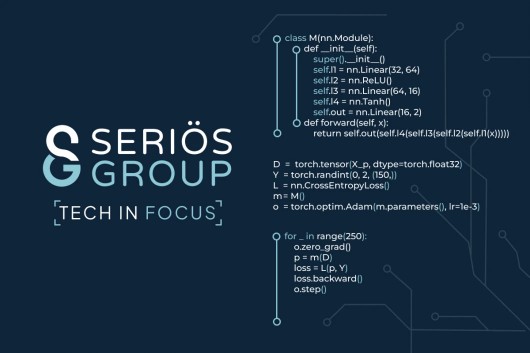Insights
You Can’t Trust What You Didn’t Design - Why Data Architecture Matters in the AI World
- Category
- Blog
- Date published
- 18.11.2025
- Written by
- Adam Brown, Head of Data Strategy and Architecture
We’re in the middle of an AI gold rush. Every organisation is racing to automate processes, accelerate insight and identify opportunities. But in the rush to build AI strategies, few are pausing to ask a more fundamental question… is your data architecture ready for AI?
The allure is undeniable, the large language models, predictive analytics, intelligent chatbots, automated decision-making and personalised customer experiences. The potential feels limitless. However, what are these capabilities all powered by? Data, and if that data isn’t well designed, structured and managed, AI will expose those weaknesses. A fragile or unclear data architecture won’t support meaningful, scalable outcomes. In fact, without a solid foundation, even the most advanced models risk producing misleading results and eroding trust. That’s why before going all in on AI, it’s worth stepping back and asking a more strategic question; does our data architecture deliver trusted and compliant data?
Data Architecture Is More Than Technology
When people hear "data architecture," many still think of ETL pipelines, data lakes, and database schemas, but that’s only part of the picture. Modern data architecture is about the intentional design of how data flows across people, processes and technology to deliver business impact.
In today’s environment, impact is no longer confined to dashboards and reports. It might take the form of customer-facing AI applications, automated workflows, or real-time, self-service analytics. The role of data architecture is to enable these outcomes by designing the structures, standards and capabilities that make them possible, and ensure they create lasting value.
As AI becomes a powerful multiplier of business performance, data architecture becomes a critical enabler. It is the foundation on which effective AI depends, and the discipline that determines whether your data drives clarity or simply amplifies noise.
What Is Modern Data Architecture?
Modern data architecture is the intentional design of how data flows from source to impact. Traditionally, data architecture was seen as a purely technical discipline, that focused on systems, pipelines, databases and infrastructure. However, in a time where data is now seen as a strategic asset and AI is expected to drive competitive advantage, architecture must do far more than move data. It must enable trust, clarity, accountability and measurable impact, and to achieve that, it must span far beyond technology alone.
Modern data architecture is an enterprise-wide discipline, as much about people and process as it is about technology. A well-architected organisation doesn’t simply design how data flows, it defines how data is created, owned, governed, understood and used. That means setting clear expectations for quality, establishing ownership and accountability, embedding governance, aligning processes for compliance and audit, and creating the conditions for data to be consistently understood and applied across the organisation.
The role of the data architect is to design the frameworks that transform raw data into a managed, trusted asset. This includes defining roles and responsibilities, building stewardship models, establishing shared definitions through business glossaries and data dictionaries, and implementing quality controls that reflect how data is used and understood across the organisation. It also involves supporting change management, training, and the adoption of processes that integrate data into everyday decision-making, making it not just available, but actionable and valuable.
Creating a valuable data asset doesn’t happen by chance. It happens through intentional design and continual oversight, supported by clear policies, executive backing, ownership and stewardship and the ability to demonstrate value through metrics, KPIs and tangible outcomes. The value of data lies not in its existence, but in its journey, in the checks and balances applied to it, the clarity with which it’s understood and the confidence with which it can be used.
Just like the architecture itself, that value is created across people, process and technology. A truly modern data architecture is not just the backbone of technical infrastructure, it’s the framework through which data becomes a trusted, strategic business asset.
AI Is a Spotlight, Not a Shortcut
AI doesn’t eliminate the need for strong data architecture, it exposes the consequences of not having one. Far from offering a shortcut to innovation, AI acts as a spotlight, revealing the structural weaknesses in your data ecosystem and magnifying the cracks that already exist. Poor governance, inconsistent definitions and reliance on informal workarounds won’t remain hidden; they will surface and be amplified in the performance, reliability and outputs of your models.
This is why AI success doesn’t begin with models, it begins with architecture, and not just technical infrastructure, but the broader framework of ownership, governance, understanding and use. A mature data architecture provides clarity around how data flows from creation to consumption. It defines who is accountable for quality, how data is protected and governed, and how meaning is standardised across teams. It ensures that experimentation can take place without compromising control and that data can be trusted at scale. Without this foundation, AI doesn’t create value, it creates noise. No model, no matter how advanced, can outperform the architecture it’s built upon.
Final Thought: Don’t Let Architecture Be the Blind Spot
The organisations that succeed with AI won’t be those with the most sophisticated models or the largest budgets. They’ll be the ones with the strongest architectural foundations, where data is treated as a strategic business asset, not just a technical by-product.
AI is not a silver bullet. It’s a force multiplier, and what it multiplies is whatever you’ve already built. If your data landscape is fragmented, inconsistent, or misaligned with the business, AI will reflect that reality. However, if your architecture is clear, deliberate and designed for trust, it becomes the platform through which AI delivers meaningful, measurable outcomes.
So, before you invest in AI, ask the more strategic question - is your data architecture designed to support it, or will it be the reason it fails?
Learn more about getting your business AI ready or schedule a consultation with our Data Solutions Experts.




